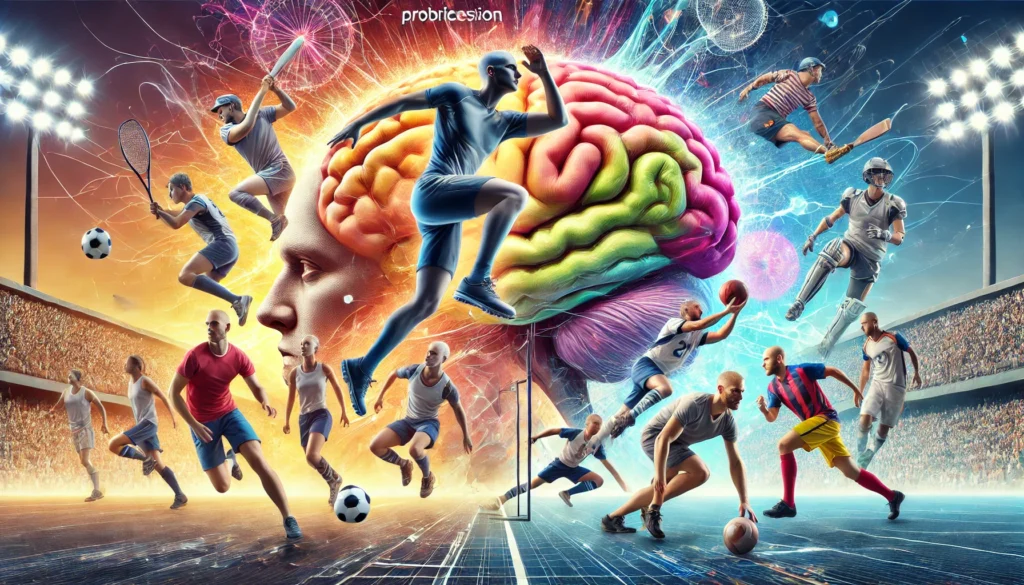How an Athlete’s Brain Differs from an Average Person’s
When we think about what makes athletes excel, physical prowess is usually what comes to mind. However, a growing body of research highlights that an athlete’s brain is fundamentally different from that of non-athletes, influencing their performance in significant ways. Let’s delve into some of the key differences.
| Factor | Description |
|---|---|
| Visual Processing | Athletes, especially in baseball, have enhanced activity in the left ventral extrastriate cortex for better visual perception and motion prediction. |
| Proprioception | Gymnasts have a highly developed cerebellum that allows for precise body movements and balance. |
| Cognitive Flexibility | Team sports athletes display remarkable cognitive flexibility, aiding in multitasking and problem-solving. |
| Structural Brain Differences | Professional divers have a thicker superior temporal sulcus, helping them interpret actions and intentions. |
| Resistance to Cognitive Decline | Older athletes like Olga Kotelko show that sustained physical activity can help maintain brain health and slow down cognitive aging. |
| Training from Young Age | Early athletic training fosters cognitive and structural brain adaptations, leading to improved performance later in life. |
Enhanced Visual Processing
Athletes, especially those in sports like baseball and soccer, develop superior visual processing abilities. For instance, baseball players are adept at predicting the trajectory of a pitch, a skill that is linked to heightened activity in the left ventral extrastriate cortex, a brain region involved in visual perception and motion prediction. This ability to anticipate and react swiftly to visual cues gives them a competitive edge.
Improved Proprioception
Proprioception, or the sense of body position in space, is highly developed in gymnasts and other acrobatic athletes. This enhanced spatial awareness is due to a well-developed cerebellum, which allows for precise body movements and balance. An example is Simone Biles, whose extraordinary balance and coordination are a testament to her superior proprioceptive abilities.

Superior Cognitive Flexibility
Athletes often display remarkable cognitive flexibility, enabling them to switch attention rapidly and adapt to changing scenarios. This is particularly evident in team sports like soccer, where players must constantly shift their focus and strategy in response to the game’s dynamics. Studies have shown that this cognitive flexibility extends beyond sports, aiding athletes in multitasking and problem-solving in everyday life.
Structural Brain Differences
Certain structural differences in the brain are also notable. For example, professional divers have a thicker superior temporal sulcus (STS), a brain region crucial for interpreting the actions and intentions of others. This structural adaptation helps divers learn by observing others and enhances their ability to perform complex movements.
Resistance to Cognitive Decline
Engaging in athletic activities can also have long-term cognitive benefits. Older athletes, like the late Canadian track-and-field star Olga Kotelko, demonstrate that sustained physical activity can help maintain brain health. Kotelko, who continued to compete into her 90s, had brain white matter comparable to much younger individuals, suggesting that physical activity can slow down cognitive aging.
Medicines and Buying Guide
| Medicine | Price |
|---|---|
| Neuro Boost Plus | $25 |
| Brain Fuel Pro | $30 |
| Memory Max | $20 |
| Cognitive Support | $35 |
| Focus Factor | $28 |
For more information, visit 95health.com.
Training the Next Generation
The benefits of athletic training on the brain underscore the importance of encouraging sports from a young age. Early athletic training can foster these cognitive and structural brain adaptations, potentially leading to improved performance and cognitive resilience later in life.
In conclusion, the brains of athletes are uniquely adapted to meet the demands of their sports, showcasing enhanced visual processing, proprioception, cognitive flexibility, and structural differences. These adaptations not only contribute to their athletic success but also offer broader cognitive benefits.
How an Athlete’s Brain Differs from an Average Person’s Quiz
Quiz content based on information from 95health.com.




